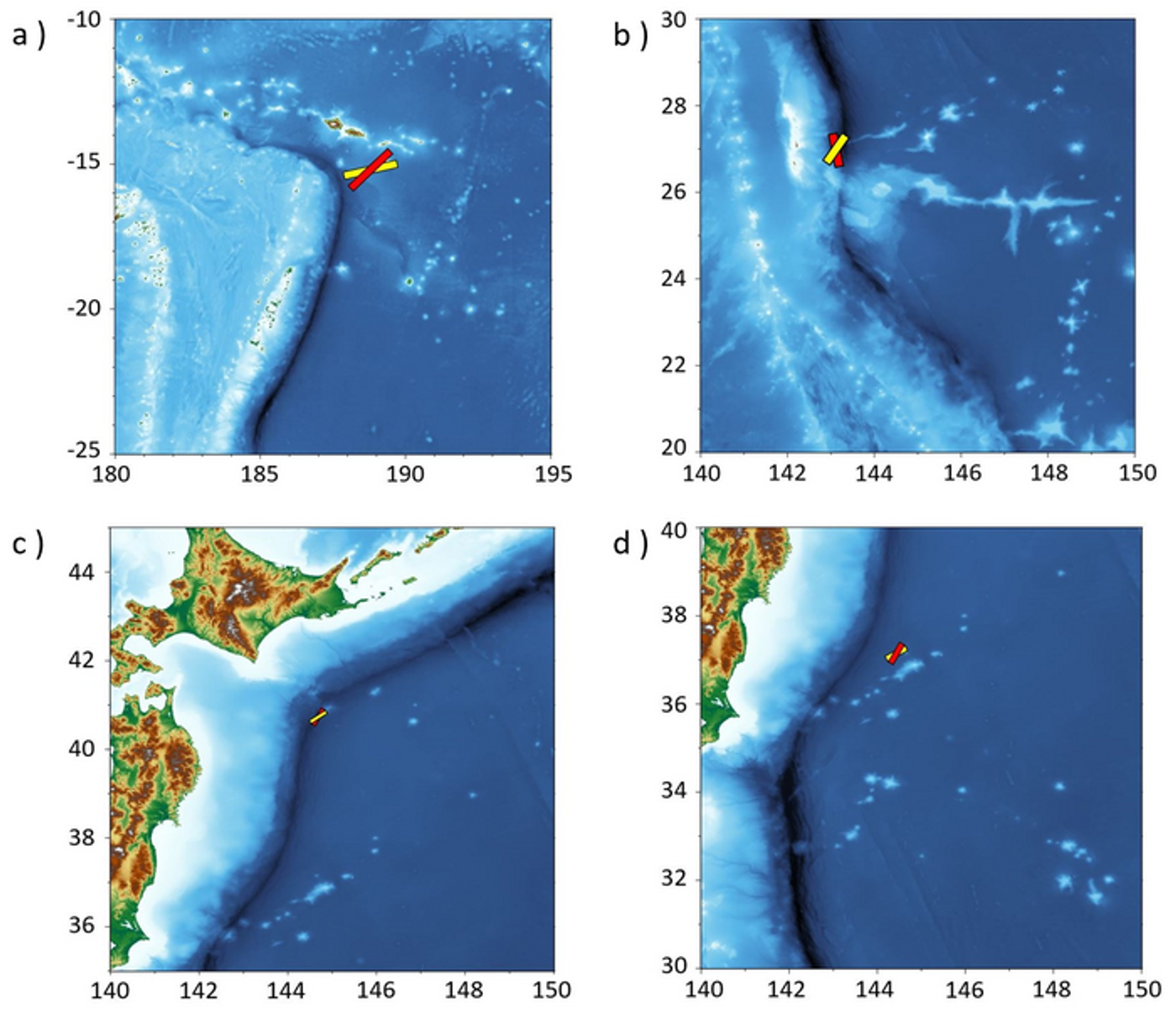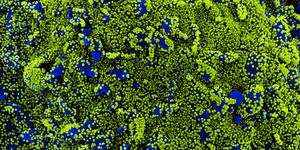Artificial Intelligence, Acoustic Technology Combination Used for Tsunami Early Warning System
We often associate earthquakes with merely occurring on dry land, but underwater earthquakes have the potential to cause even greater damage by creating tsunamis that come ashore, causing literal waves of destruction in their path. Trying to predict tsunamis has proven to be difficult due to varying characteristics of underwater earthquakes. But what if we were able to predict tsunamis that result in minimal destruction and loss of life?
This study investigates four previous earthquake scenarios linked with tsunami events. The red and yellow rectangles show the predicted earthquake dimensions, locations, and orientations retrieved by the proposed inverse model for sound radiation used in the study. The analyzed earthquakes are: a) Sept. 29, 2009, Mw 8.1, SSW of Matavai, Samoa; b) Dec. 21, 2010, Mw 7.4, Bonin Islands, Japan region; c) March 14, 2012, Mw 6.9, SSE of Kushiro, Japan; and d) Oct. 25, 2013, Mw 7.1, off the east coast of Honshu, Japan. The model produces two potential fault orientations for each earthquake scenario, which are modeled and compared to each other. (Credit: Bernabe Gomez and Usama Kadri)
This is precisely what a recent study published in Physics of Fluids hope to address as a team of researchers combined artificial intelligence (AI) with acoustic (sound) technology to develop a tsunami early warning system based on earthquake classification and the risk of an impending tsunami. Part of this is trying to figure out the type of earthquake that triggers a tsunami.
“Tectonic events with a strong vertical slip element are more likely to raise or lower the water column compared to horizontal slip elements,” said co-author Bernabe Gomez. “Thus, knowing the slip type at the early stages of the assessment can reduce false alarms and enhance the reliability of the warning systems through independent cross-validation.”
For the study, the researchers recommended measuring earthquake-produced sound using hydrophones (underwater microphones) to track the earthquake. This is then input into an AI algorithm to identify the kind of fault slip and earthquake magnitude. The algorithm then runs a series of computations to ascertain the size of the potential tsunami.
The researchers successfully tested their model using hydrophone data and found minimal computational energy was required to output the earthquake parameters. The team is currently working on improvements to their model by including information to better characterize a potential tsunami.
This work can not only be used to predict tsunamis, but also improve the safety of ships and offshore platforms, as well.
Understanding tsunamis and their environmental and human impacts are crucial since greater than 700 million people across the globe live in coastal areas or regions that are vulnerable to tsunamis. It was also found that tsunamis were responsible for more than 250,000 deaths across the globe between 1998 and 2017, the vast majority of which, approximately 227,000 deaths, came from the Indian Ocean tsunami that occurred in 2004.
An example of how tsunamis can result in both infrastructure and enviornmental concerns is the Fukushima nuclear accident that took place in March 2011 after a 9.0 earthquake struck off the coast of Japan, resulting in a 50-foot tsunami striking the mainland a short time afterwards. When this tsunami struck the Fukushima nuclear plant, it disabled the power supply which controlled the cooling of three nuclear rods. This caused the rods to overheat and melt in a matter of days. This disaster resulted in over 2300 deaths, along with the almost 20,000 deaths from the earthquake and tsunami beforehand.
What new discoveries will researchers make about tsunamis in the coming years and decades? Only time will tell, and this is why we science!
Sources: Physics of Fluids, EurekAlert!, World Health Organization, World Nuclear Association
As always, keep doing science & keep looking up!









